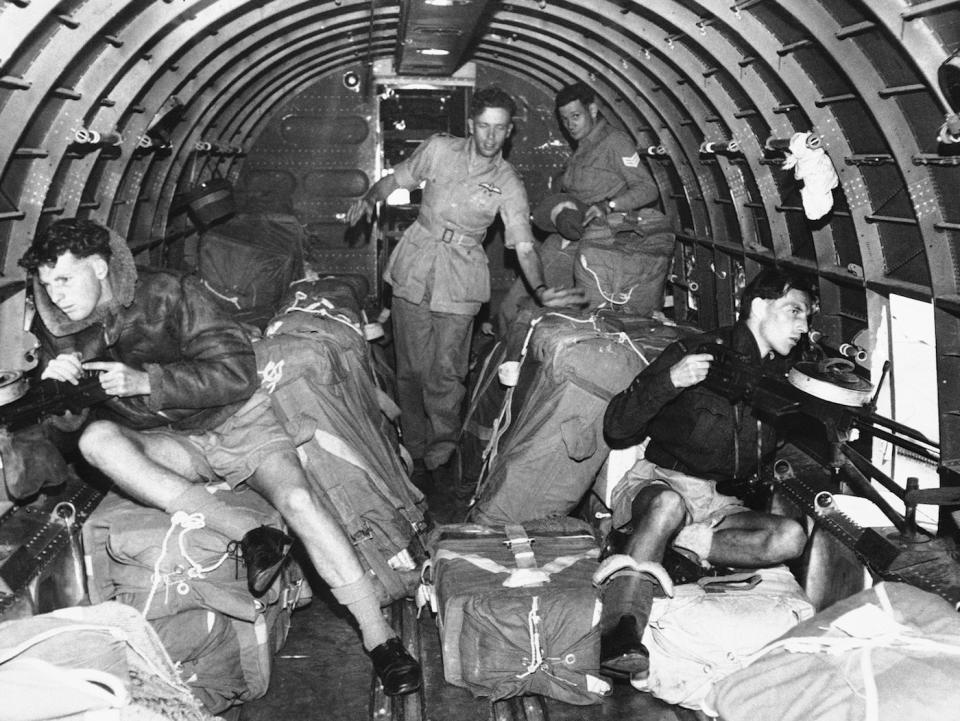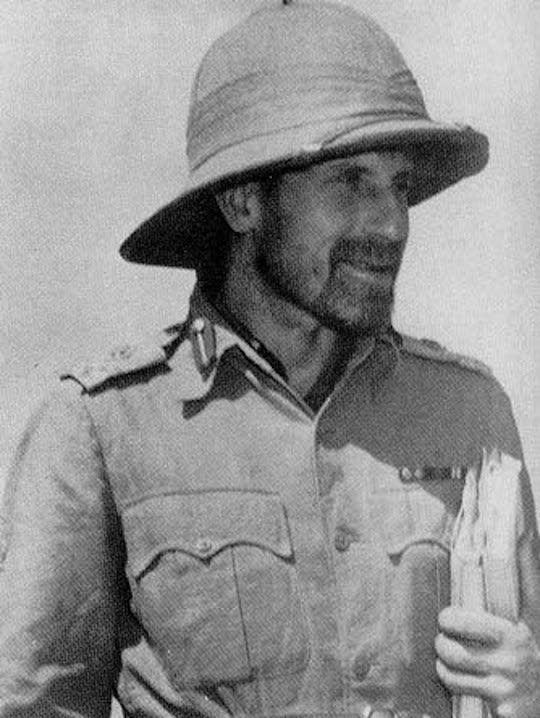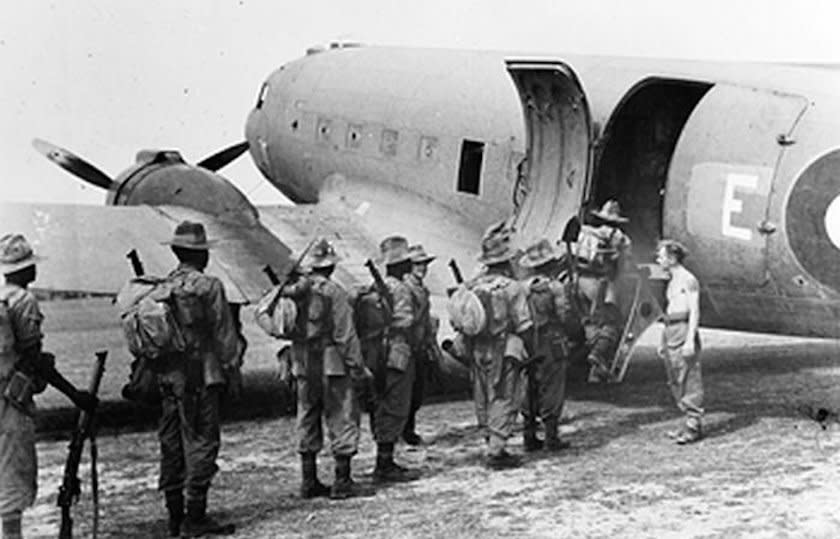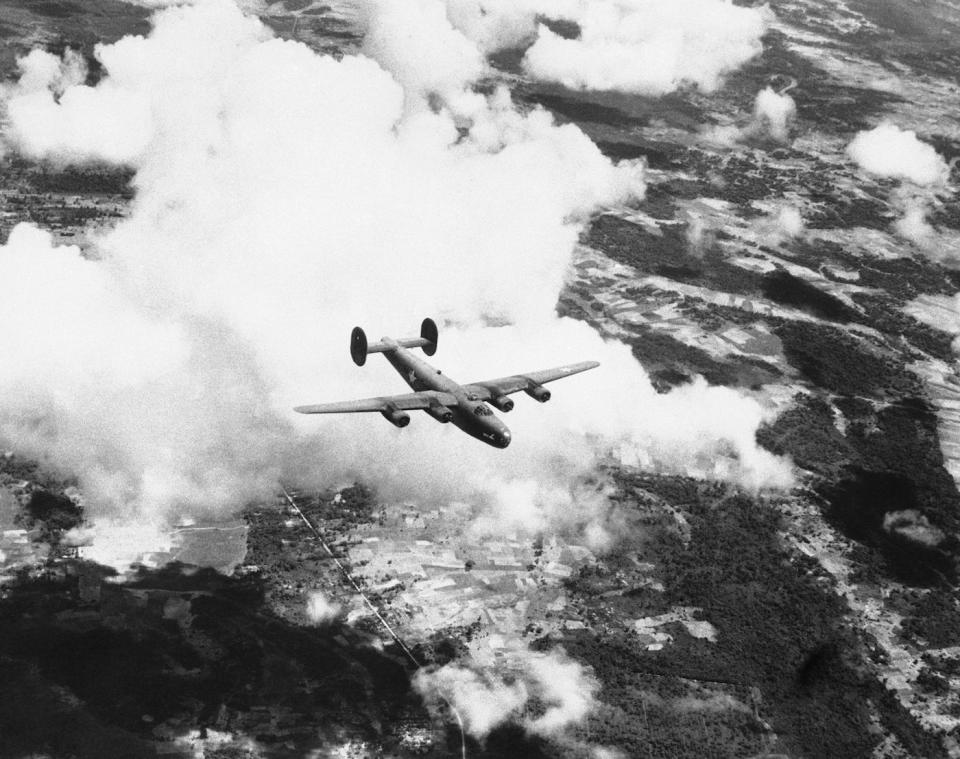Meet the British special operators who terrorized the Japanese during World War II

British government/Wikimedia Commons
In 1943 and 1944, specially chosen units of the British Empire were sent into the jungles of Burma on "Chindit" expeditions that went deep behind Japanese lines and assaulted railways, logistic hubs, and bridges to cripple Japanese forces and force them to redirect forces from other fronts.
Most soldiers sent into the jungle were wounded, killed, or fell ill, but they made the Japanese pay.
The first Chindit expedition, Operation Longcloth, was effected by the 77th Indian Infantry Brigade when they marched into Japanese-occupied Burma in 1943. They attacked Japanese supply depots as well as rail and communication lines.
The unit was made up of multiple infantry regiments, a commando company, eight sections of the Royal Air Force, a signal section, and a mule transport company.
Despite the large infantry elements the unit had on paper, they were predominantly a special operations force and they were trained that way, spending months in India working out how to move and live in the jungle with limited resupply or permanent structures.

(AP Photo)
The first expedition damaged critical infrastructure but saw less direct fighting with Japanese forces. This caused a shift in Japanese thinking, making them feel that they were too vulnerable with a defensive posture in Burma. The efforts of the 77th Brigade pushed the Japanese to go on the offensive, making them give up troops in ultimately failed attacks on Allied forces.
But the effort was costly. A third of the troops were lost in the jungle or too wounded or sick to march out. The British left them behind. Another 600 were too ill after their return to civilization to fight again, and were sent to hospital until released from service.
Still, the efforts had proved that a single brigade of irregular forces, properly organized and trained, could shift the strategic balance in the jungle.
The commander, British Gen. Orde Wingate, proposed a second, larger expedition for deployment in 1944.
Prime Minister Winston Churchill readily agreed and assigned six brigades to the task and the American 1st Air Commando Group was assigned to support the operation.

US military photo/Wikimedia Commons
While training the forces for the second Chindit expedition, Wingate took some time to help train America's 5307th Composite Unit, which would earn fame under the name "Merrill's Marauders" for operations similar to the Chindits'.
Operation Thursday began with two forces making their way into the country on the ground in the opening weeks of 1944 while four more brigades were to be inserted via glider.
The initial glider landings on March 5 were unopposed but still faced major problems. Aerial reconnaissance had failed to spot ditches and trees on the dropzone and glider crashes killed 30 men and wounded 28.
Another 400 men landed safely and improved the runway enough for Dakota aircraft to start ferrying in supplies and additional men. 18,000 troops quickly arrived on the ground with everything they needed to move through the jungle and hunt Japanese soldiers, and more followed over the next few days.
Wingate's orders could be broadly summarized in three points. He was to:
Draw off and break up Japanese forces fighting in the Ledo Sector where Gen. Joe Stilwell was trying to create a road for US resupply,
Prepare the battlefield for the Chinese forces advancing from the east, and
Absolutely destroy every Japanese target that presented itself.
Operation Thursday took place in the middle of Japan's supply and logistics operations in Burma. Wingate said his force "had been inserted into the enemies' guts."
Unlike the 1943 operation, the second expedition relied on some static defenses and bases.
"White City" was constructed on a Japanese railway to control operations there, while a landing site named "Broadway," one of the three original dropzones, was built into a large and powerful airbase. Other installations included "Aberdeen" and "Blackpool."
Except for the White City and Blackpool, both built on the railroad, Chindit installations were built into the jungle where they were less likely to stumble into Japanese forces.

Imperial War Museum/Wikimedia Commons
The men were deployed in columns of about 400 men at a time, fighting when they encountered an appropriate enemy force but melting into the jungle and re-forming when faced with a larger Japanese element.
Occasionally, an especially tough target needed to be brought down, and the columns would re-form into battalions or brigades.
All of this would prove disastrous for a Japanese force already heavily committed to a fight with Allied forces under Gen. Joe Stilwell while suffering guerrilla attacks from other irregular forces, like the Kachin Rangers under US Army Col. Carl Eifler of the OSS.
The mission achieved its main objectives by the end of March, supporting the efforts of their allies across Burma, but the force stayed in position and continued to hamper Japanese elements.
On March 24, the mission suffered a major setback when Wingate died in a plane crash. His successor, Brig. Gen. Joseph Lentaigne maintained the Chindits' mission until ordered in May 1944 to fall in under Stilwell. Stilwell deployed the force like a typical infantry unit for a number of attacks, but failed to provide it with sufficient artillery and air support in some cases.
Estimates for casualties under Stilwell's direction range as high as 90% of all casualties suffered by the six brigades. The 77th Brigade suffered 50% losses in a single battle when ordered against Moguang.
Stilwell later ordered the 77th to take Myitkyina despite being at only 10% strength. The commander turned off his radios and marched out instead.

AP Photo
Eventually, the Japanese forces in Burma began to find and conduct serious assaults on Chindit strongholds, especially White City and Blackpool on the rail networks. White City held out for its entire existence, suffering some penetrations past the wire, but always repelling the enemy force eventually.
Blackpool was not so lucky. Close to Japanese lines, it was eventually isolated thanks to Japanese anti-aircraft guns that prevented aerial resupply. The men were finally forced to fight their way out — 2,000 starving and sick men cutting past the jungle and the Japanese.
The rest of the Chindits, meanwhile, were suffering from the intense fighting, jungle heat and humidity, and disease. By late July, Lentaigne made the decision that the 111th Brigade was no longer fit to fight and withdrew them on his own authority. The rest of the Chindits followed over the next month and the last emerged from the jungle in late August 1944.
The Japanese forces in Burma were falling as were many of the Japanese positions across the Pacific, but the Chindits had once again paid dearly for their success. Over 1,000 men were killed, 2,400 wounded, and 450 missing. Meanwhile, over half of the survivors who made it out had some illness that required hospitalization or special diet.
Maladies like malaria, dysentery, and jungle sores were most common, and many soldiers had two or three of the conditions at once.
The 77th Brigade was the only one to fight in both expeditions. It was later disbanded but has been re-activated as a cyber warfare force focused on unconventional warfare in the digital domain.
See Also:

 Yahoo Finance
Yahoo Finance 
